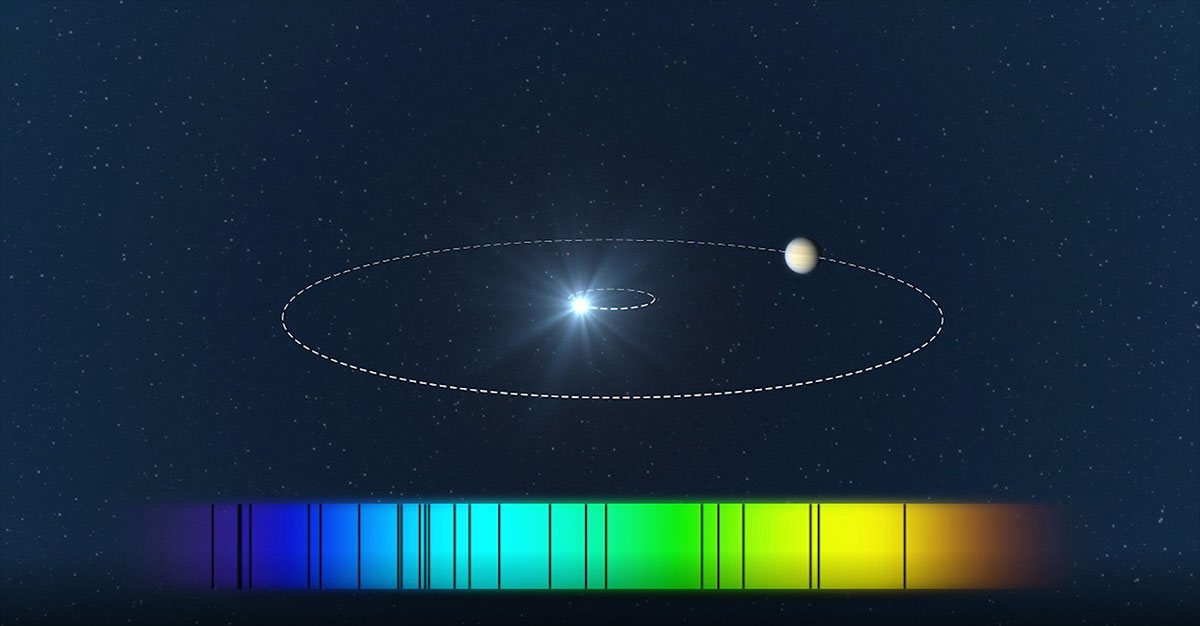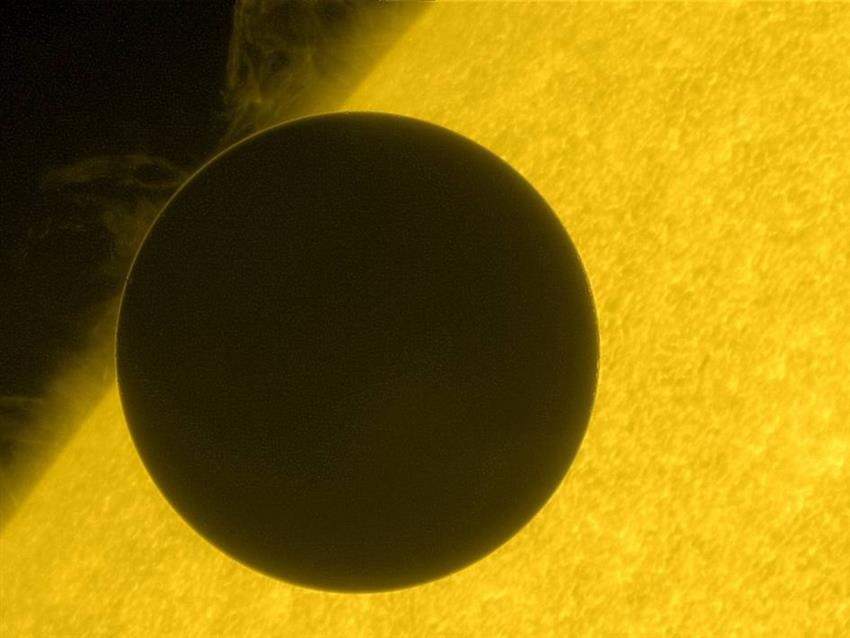Detecting exoplanets
Researchers are able to take incredible pictures of the planets in our solar system using powerful telescopes and space probes. But exoplanets, which orbit distant stars, are more difficult to directly observe, because they are much farther away and close to their extremely bright stars. Instead, astronomers often detect exoplanets indirectly, through the effect they have on their host star.
How do astronomers discover new exoplanets?
Transit method
For an observer, when a planet passes in front of its star, it is called a "transit." From Earth's point of view, we can see Venus and Mercury crossing in front of the Sun on rare occasions. Planets can also transit in front of distant stars. When this happens, the brightness of the star appears to decrease temporarily.
Astronomers can detect exoplanets by spotting these dips in the brightness of stars. Certain space missions like NASA's Kepler Space Telescope have been designed to stare at hundreds of thousands of stars at a time to detect these temporary changes. Based on the frequency of these light variations, scientists can determine the size and orbital period of the exoplanets. Three-quarters of known exoplanets have been discovered using the transit method!

[Video] An animation showing the effect on a star's light when an exoplanet passes in front of it. A larger planet blocks more light than a smaller one, causing a larger dip in brightness. (Credit: NASA-JPL)
Transits captured by sensitive space telescopes can not only help find new exoplanets, but they can also help reveal the composition of the distant planets' atmospheres! When an exoplanet passes in front of a star, the light of the star shines through the atmosphere of the planet. Scientists study this light using a technique called transmission spectroscopy to learn more about the chemical composition of the planet's atmosphere. Molecules like oxygen and water can be detected. Finding these molecules – and other possible signs of life known as biosignatures – is one of the key goals of the James Webb Space Telescope and the Canadian-led NEAT program.
Radial velocity method

[YouTube video] An animation of the movement, or wobble, of a star due to the gravitational effect of a planet orbiting around it (top). The star's motion is observed as changes in the colours of its light spectrum (bottom). (Credit: ESO/L. Calçada)
A planet travels along its orbit because of the gravitational pull of its star. But did you know that stars also move slightly – or wobble – because of the gravitational effect of their planets?
A star's wobble is tiny compared to a planet's orbit since stars are so much bigger than planets. Despite this difference, instruments on modern telescopes are now sensitive enough to measure this wobble.
The first exoplanet ever detected around a Sun-like star, 51 Pegasi b, was discovered using the radial velocity method in . Here's how it works: as a star wobbles, moving towards and away from the observing telescope due to the presence of one or many planets, the light it emits is affected. Scientists can calculate how fast a star is wobbling by measuring the intensity of the Doppler effect – the stretching and compression of lightwaves. The faster the wobble, the bigger and closer the planet orbiting the star!
Have you ever noticed that an ambulance sounds different depending on whether it is getting closer to you or farther away from you? This phenomenon is known as the Doppler effect. As the ambulance approaches, the soundwaves it creates are compressed, creating a higher pitched sound. As the ambulance recedes, the soundwaves are stretched, lowering the pitch of the sound. The same effect also happens to light. An object emitting light will appear bluer when it is getting closer (as the lightwaves compress) and redder when it's getting farther away (as the lightwaves stretch). These effects are known as blueshift and redshift.
The radial velocity method has Canadian roots! In the 1980s, a team of Canadian astronomers – Bruce Campbell, Gordon Walker and Stephenson Yang – pioneered the observational technique used to discover exoplanets based on radial velocity measurements.
Direct imaging

[YouTube video] An animation of direct images of star HR 8799 and its four orbiting exoplanets. The central star, marked with a star symbol, has been masked to get rid of the glare that would otherwise drown out the light from the planets. The seven images were taken over seven years using the Keck Telescope on Maunakea in Hawai'i. (Credit: Jason Wang [Caltech]/Christian Marois [NRC-Herzberg].)
It is extremely difficult (but not impossible!) to take direct images of planets outside our solar system. Their extreme distance from Earth and tiny size (in relation to their host star) means that exoplanets are very hard to capture, especially in the kind of high-resolution we are now used to seeing the planets and asteroids within our own solar system.
To directly image an exoplanetary system, scientists block out the central star to prevent its glare from drowning out the planets. Direct imaging is easier if the planets are relatively far away from their star, or if the whole system is young, as young planets are brighter and easier to spot. Astronomers have even been able to directly observe planets as they are being formed!
The challenges of direct imaging – distance, glare, some planets' small size – mean that most of the images of exoplanets in popular media are artists' concepts of what the distant worlds might look like. Scientists have only been able to directly image a handful of exoplanets; in , a team of Canadian astronomers was the first to directly image a multi-planet system, the planets around star HR 8799.

